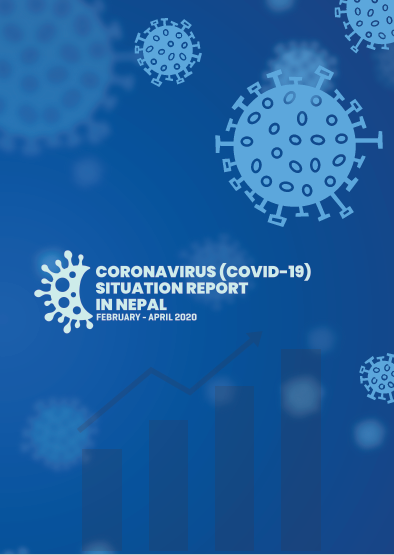Analysis
Coronavirus (COVID-19) Situation Report In Nepal, February - April 2020
2020-05-03

The whole world is facing an enormous challenge to end the spread of Coronavirus which has affected millions. The situation is critical and recognizing the possible implication of negligence the government of Nepal has followed some preventive measures to stop the spread of COVID-19 by implementing nation-wide lockdown, setting up test centers for the Coronavirus and isolation wards in different parts across the country. Until April 23, the number of positive cases had reached 47. However, the government has not yet been able to establish comprehensive deliverable strategies not only to tackle potential Corona cases but also to counter its domino effect in social, economic, and psychological sectors. To deal with this pandemic, there is a need to further intensify the existing efforts, enhance coordination and cooperation, make the required supply of logistics, and increase the number of testing, among the key priorities.
On March 24, the government announced nation-wide lockdown within a few hours of the second positive case being found1, before the crisis would cripple the country. Notwithstanding this, the country was not prompt in taking crucial decisions; for instance, shutting down international flights, especially flights from high-alert countries and regions; sealing neighboring borders, in particular, an open border of 1800 km with India; buying the necessary and adequate number of health kits including, gloves, surgical masks, and Personal Protective Equipment (PPE); allocating adequate budgets and distributing requisite health kits and treatment equipment at the provincial and local level; and coming up with an effective health and economic relief packages for the citizens. On April 6, the government decided to extend the lockdown till April 15 after another local citizen tested positive for Covid-19.
The lockdown has heavily impacted workers in informal economic sectors making people in need more vulnerable. The crisis has forced internal migrants to return to their villages after losing their jobs in the capital and other cities. With no social security in place, the only avenue for the next meal is the relief package from the local government for most of the daily wage earners. However, the arbitrary nature of relief distribution in absence of reliable data on the economically vulnerable group has left many into doubting whether the people who most need the relief are the ones getting it. The perceived partiality in relief distribution has caused people to protest even at the times of lockdown. Some people have gone as far as to assault the local representatives and to vandalize the office of local level, venting their frustrations over the whole process. Similarly, the immigrants in the Gulf region are concerned in host countries due to unemployment and no option of returning home as the borders are closed and international flights banned. The mass effort to save lives by going into lock down has put one vulnerable group more at risk. Women and children who have to live with their abuser of domestic violence have limited or no way to escape during the lockdown. Addressing the issues of gender based violence (GBV) itself was a challenge in Nepal and now COVID-19 has further worsened it.
Since the World Health Organization (WHO) declared the outbreak as a global pandemic, lives have been upended and economic activities disrupted around the world. The World Bank’s recently released South Asia Economic Focus anticipates a sharp economic slump in Nepal’s GDP, with growth projected to range between 1.5% and 2.8 % in FY20, a dramatic drop from the previous forecast of 5.3%. As remittance accounts for over 29% percent GDP and as the service sector accounts for over a half of GDP, the health of the global economy deeply affects the economy of Nepal. A prolonged outbreak of COVID-19 would have a severe impact on the global economy and would decelerate or contract services and industrial production in Nepal as well.
Service industries like tourism, airlines, and hotels will be hit hard in Nepal until the global economy recuperates from the recession. The tourism and hospitality sector provides a larger scale of employment in the country. The workers at the lower rung, such as tour guides and porters are hardest hit because they depend on seasonal work for the entire year. For Nepal, as tourism is the second-largest earner of foreign exchange, this industry was expected to drive the country’s economic growth and contribute greatly to the high growth target of 8.5 percent that the government had set for this year, however, this industry itself tends to be in a financial crisis. The contribution of the tourism sector to Nepal’s economy stood at 7.9 percent in the 2018/19 fiscal year. As the pandemic threat rises, the government also canceled its ‘Visit Nepal 2020’ campaign, which was launched in January this year with the goal of attracting 2 million foreign tourists. The impact has also been visible in manufacturing industries as most raw materials are imported from China.
This situation report presents an update on the virus, its impact and the human rights violation during the time of this crisis. Even the health workers in the front line who are working tirelessly are often being stigmatized and seen as someone who could be carrying the virus. Fake news regarding the virus via social media left the citizens in misinformation and trepidation. Whereas, many saw the crisis as an opportunity to cash in by overcharging on necessities such as face masks, hand sanitizer and other essential needs.

